7 enchanting places go forest bathing in Southern California
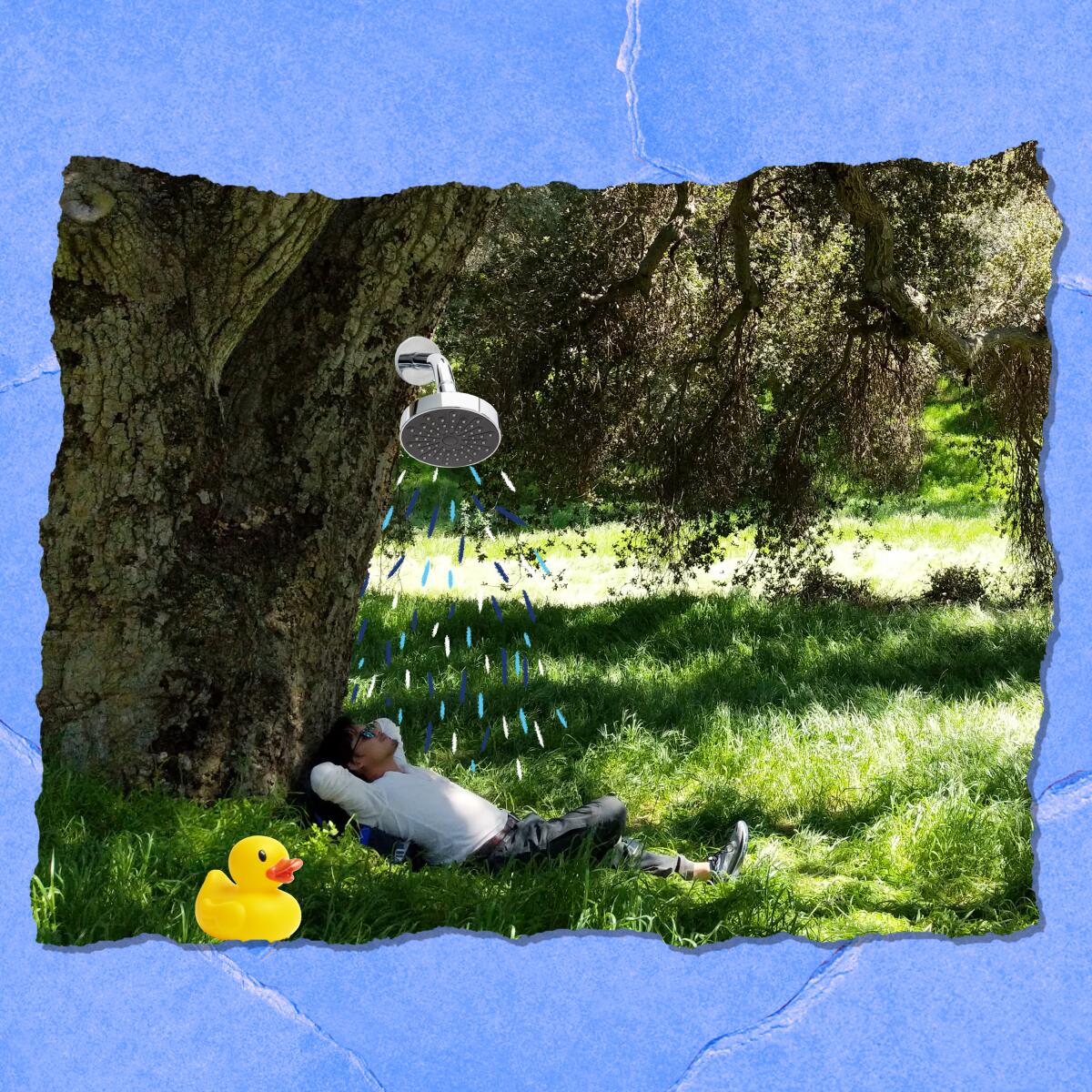
Forest bathing, or shinrin-yoku, emerged in Japan in the 1980s as a form of nature therapy. How it works: You get out into a natural setting, mindfully observe your surroundings, and engage your senses. Basically, you slow down. A number of research studies recognize the practice as a way to “reduce stress, improve mood and even boost the immune system.” Times contributor Sara Cagle attended a forest bathing class at the L.A. County Arboretum and Botanic Garden (which is currently holding guided full moon forest baths throughout the summer) and documented the experience.
“One person noticed the chirping of songbirds,” Cagle writes. “Another stared at the vibrant shades of green. One woman said she became so relaxed, she felt like she was shedding her first skin.”
Get The Wild newsletter.
The essential weekly guide to enjoying the outdoors in Southern California. Insider tips on the best of our beaches, trails, parks, deserts, forests and mountains.
You may occasionally receive promotional content from the Los Angeles Times.
Although guided classes are wonderful, forest bathing can be done in any natural setting, either with a group or alone. How should you go about it? There are no rules — simply turn off your devices and wander. Here are my seven favorite forest bathing spots in Southern California — with an optional hike to go with them.
1. Carbon Canyon Regional Park, Brea. Go for maximum shade for your summer forest bath under the redwoods via a 2-mile loop in Orange County. Brea’s Carbon Canyon Regional Park is home to the largest grove of coastal redwoods in Southern California (241 Sequoia sempervirens specimens, to be exact), the tallest here being nearly 100 feet. Planted in the 1970s for a local bank promotion, the dense forest provides a 10-plus-degree temperature drop — perfect for combating the summer heat and providing a magical space for your sensory experience.
Trailhead: Carbon Canyon Nature Trail
Address: 4442 Carbon Canyon Road, Brea
Distance: 2-mile loop
Elevation: 100 feet
Parking: dirt/paved lots ($3 weekdays, $5 weekends)
2. Wildwood Canyon State Park, Yucaipa. Coast live oaks might just be the arboreal mascot of Southern California. There are plenty of local spots to find varieties (certainly in our popular green-space trifecta of the Santa Monica Mountains, Griffith Park and Angeles National Forest), but opt for a less-traveled forest by way of a 2.25-mile stroll through Yucaipa’s Wildwood Canyon State Park. It may not surprise you to find fairy-tale-like groves of oak canopies along the Oak Tree Loop Trail, but a meditative meander in this forest is a one-of-a-kind bath.
Trailhead: Oak Tree Loop
Address: 12241 Canyon Drive, Yucaipa
Distance: 2.25-mile loop
Elevation: 400 feet
Parking: dirt lot
3. Cooper Canyon Falls, Angeles National Forest. Enjoy a serene waterfall via a 3-mile out-and-back reflective romp on the Burkhart Trail deep in the San Gabriels. Starting from Buckhorn Campground (which is a great spot to pitch a tent among the trees), the path parallels a quaint stream. And there are trees. Lots of trees. Moss-covered cedars, towering Jeffrey pines and iconic Douglas firs. Destinations are optional in forest bathing, but a good turnaround point is the eponymous cascade — although Cooper Canyon falls flow best after a rain, even a tranquil trickle adds an extra element of Zen to your trek.
Trailhead: Burkhart Trail
Address: Buckhorn Campground, Pearblossom
Distance: 3-mile out-and-back
Elevation: 750 feet
Parking: paved lot (Adventure Pass required)
4. Heaps Peak Arboretum, San Bernardino National Forest. The acreage is small but the restorative rewards are big on a 1-mile loop trail that features the Ann Henck Stewart Memorial Sequoia Grove, a SoCal rarity planted in the 1930s. Other trees to bathe under: Jeffrey pines, sugar pines, white fir, black oak, incense cedars and Coulter pines, which have the largest cones in the world (look for the educational display case for up-close viewing). Since Heaps Peak Arboretum is perched at 6,000 feet, check road conditions before visiting.
Trailhead: Sequoia Trail
Address: 29358 Rim of the World Highway #18, Skyforest
Distance: 1-mile loop
Elevation: 100 feet
Parking: paved lot (Adventure Pass required)
5. Escondido Falls, Malibu. There’s no shortage of beautiful bark in the Malibu portion of the Santa Monica Mountains National Recreation Area. You can’t go wrong with any hike, but I like Escondido Falls for its quick access off PCH and an interesting element that might normally spurn forest bathers. The 3.75-mile out-and-back trek actually starts via a paved two-thirds-mile ascent through extravagant beach-view residences (after all, Escondido does mean “hidden”). But you won’t only be bathing in mansions. Once you reach the canyon trail, you’ll find sycamores, willows and oaks following a gentle stream. Your forest bathing terminus is a woodland grotto with 50-foot falls (please protect the habitat and don’t climb to the second tier). If all this makes you crave a rejuvenating swim, hop PCH to a nearby beach.
Trailhead: Winding Way/Escondido Canyon Trail
Address: 27200 Winding Way, Malibu
Distance: 3.75-mile out-and-back
Elevation: 550 feet
Parking: Paved lot ($12) or street parking (free along PCH)
6. Elysian Park. Don’t dismiss the eucalyptus trees. Though these fast-growing, drought-tolerant gum trees are often considered an arboreal controversy in California, their grand and aromatic presence can provide a welcoming forest bath (think aromatherapy). In my humble opinion, Will Rogers State Historic Park has the most impressive grove of the flourishing non-natives, but opt for a forest bath in the heart of the urban jungle at our city’s oldest green space. The 2.5-mile West Loop has eucalyptus but also towering palms, the hidden succulent treasures of Marian Harlow Memorial Grove and the Elysian Park Arboretum. Once filled with exotic trees, it is now an expansive picnic space, but look for interpretive signs detailing unique specimens like the naked coral tree.
Trailhead: West Loop Trail
Address: 1025 Elysian Park Drive, Los Angeles
Distance: 2.5-mile loop
Elevation: 250 feet
Parking: street parking
7. Point Fermin Park, San Pedro. Though I may stretch the term “forest” here, this coastal green-space gem has one of the most impressive arboreal collections in any city park. For a fig focus, try a beginner’s bathing course at San Pedro’s Point Fermin Park, which has nearly 20 absolutely massive Moreton Bay figs, all of which are perfect for a shaded picnic. For an urban stroll, consider a 2.5-mile park-to-park walk that features the giant banyans, panoramic coastal views along seaside cliffs, peregrine falcons and a bit of history (look for the nearby sunken city and the Korean Friendship Bell). Plus, neighboring Royal Palms beach features perhaps the best beachside palm grove in L.A.
Trailhead: Point Fermin Park
Address: 807 W. Paseo Del Mar, San Pedro
Distance: 2.5-mile out-and-back
Elevation: 100 feet
Parking: paved lot or street parking
Local gardens are also some of the most satisfying venues for your next forest bathing journey — think the aforementioned L.A. County Arboretum, the Huntington Library, Descanso Gardens, South Coast Botanic Garden or the California Botanic Garden, all of which have an admission fee. Wherever you bathe, just remember to breathe and take in the natural beauty surrounding you.
7 things to do

1. Wish upon some stars (while learning about them too) at the Night Sky Festival in the Santa Monica Mountains. Enjoy some “nocturnal entertainment” (as Carl Sagan referred to stargazing) at National Park Service’s Night Sky Festival on Saturday from 7 to 10 p.m. at Paramount Ranch. As part of their Park After Dark Festival Series, rangers and telescopes will be on site to help you discover the mysteries of our Milky Way galaxy (or, for your young ones, become a night sky junior ranger). Bring a flashlight, warm layers and your curiosity.
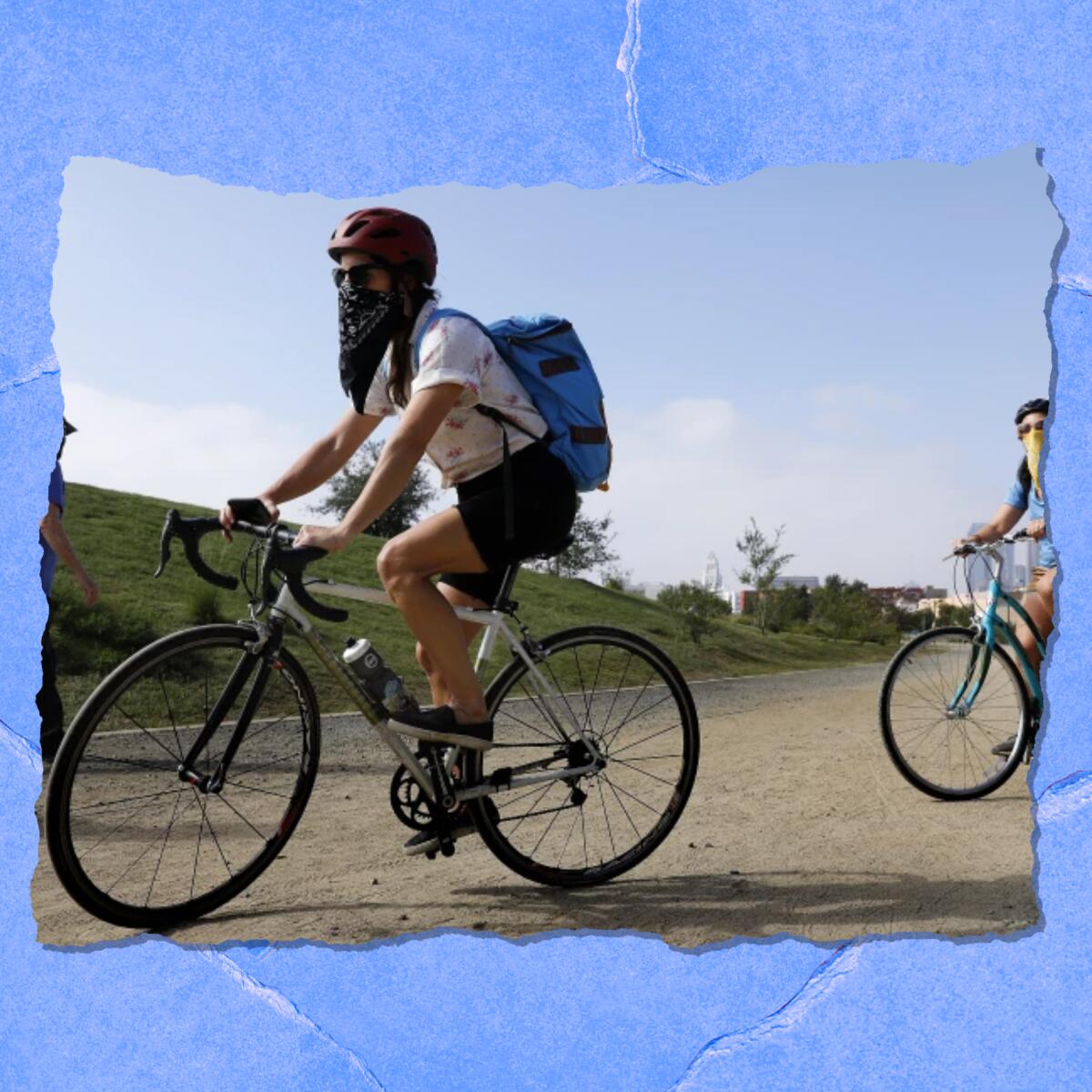
2. Enjoy the ride at Bike Day at L.A. State Historic Park. On Sunday, from 9 a.m. to noon, meet up with like-minded folks with different spokes at Bike Day and learn about CiBiC, the UCLA-led Civic Bicycle Commuting project that encourages riding in numbers. People for Mobility Justice will also be there to help riders of all ages learn skills and safety on a bike course, as well as how to commute in DTLA. There will be snacks, art workshops and bicycle raffles.
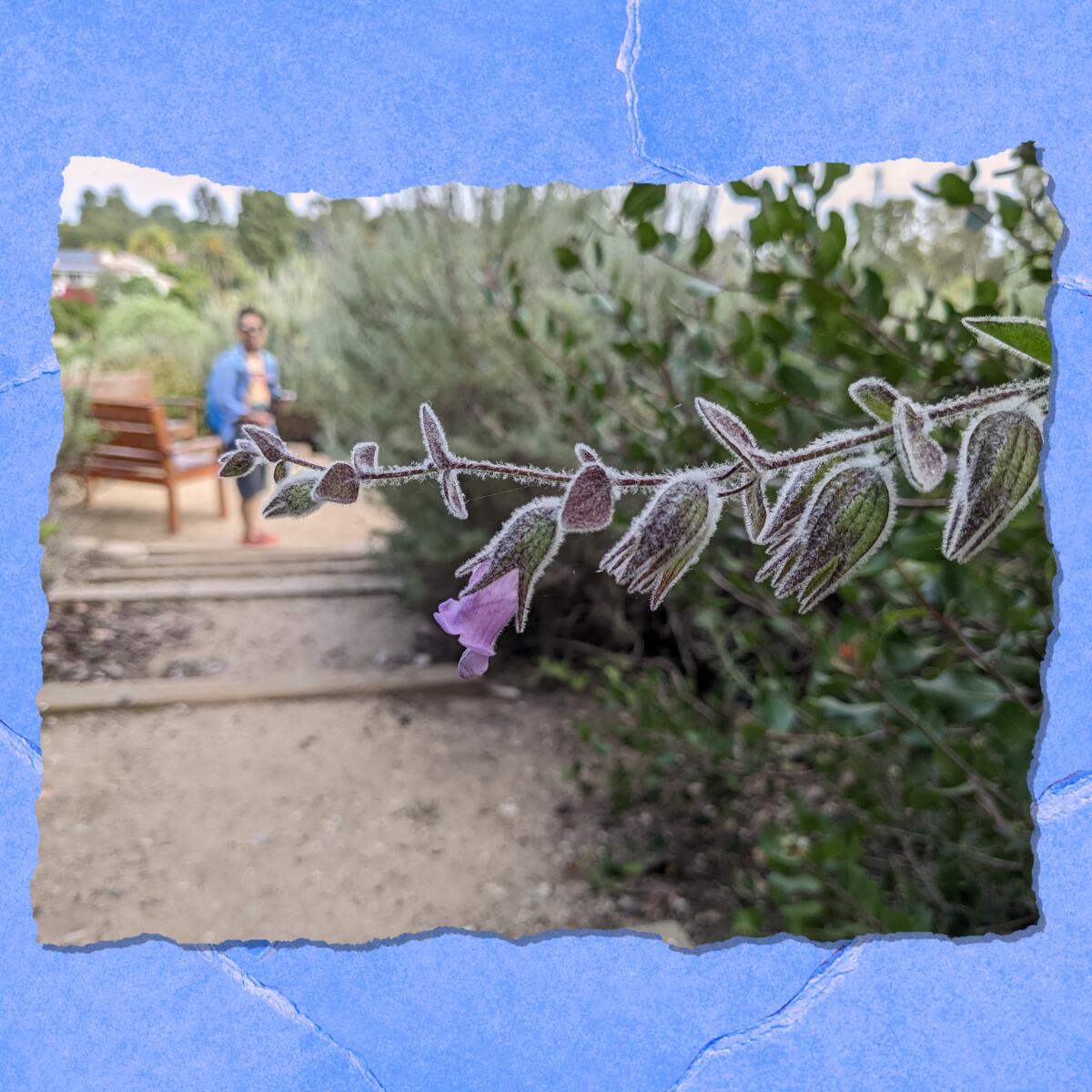
3. Explore a secret canyon with a guide in Rancho Palos Verdes. The 51-acre oasis that is George F. Canyon Nature Preserve is the epitome of a hidden gem — you immediately feel whisked away from the surrounding suburbia while taking in an incredible variety of native shrub land and woodland flora. See it all on Saturday at 9 a.m. with a guided hike, which begins at the nature center. If you want more mileage and more hidden gems, head to the 28.5-acre Linden H. Chandler Preserve for another charming trail.
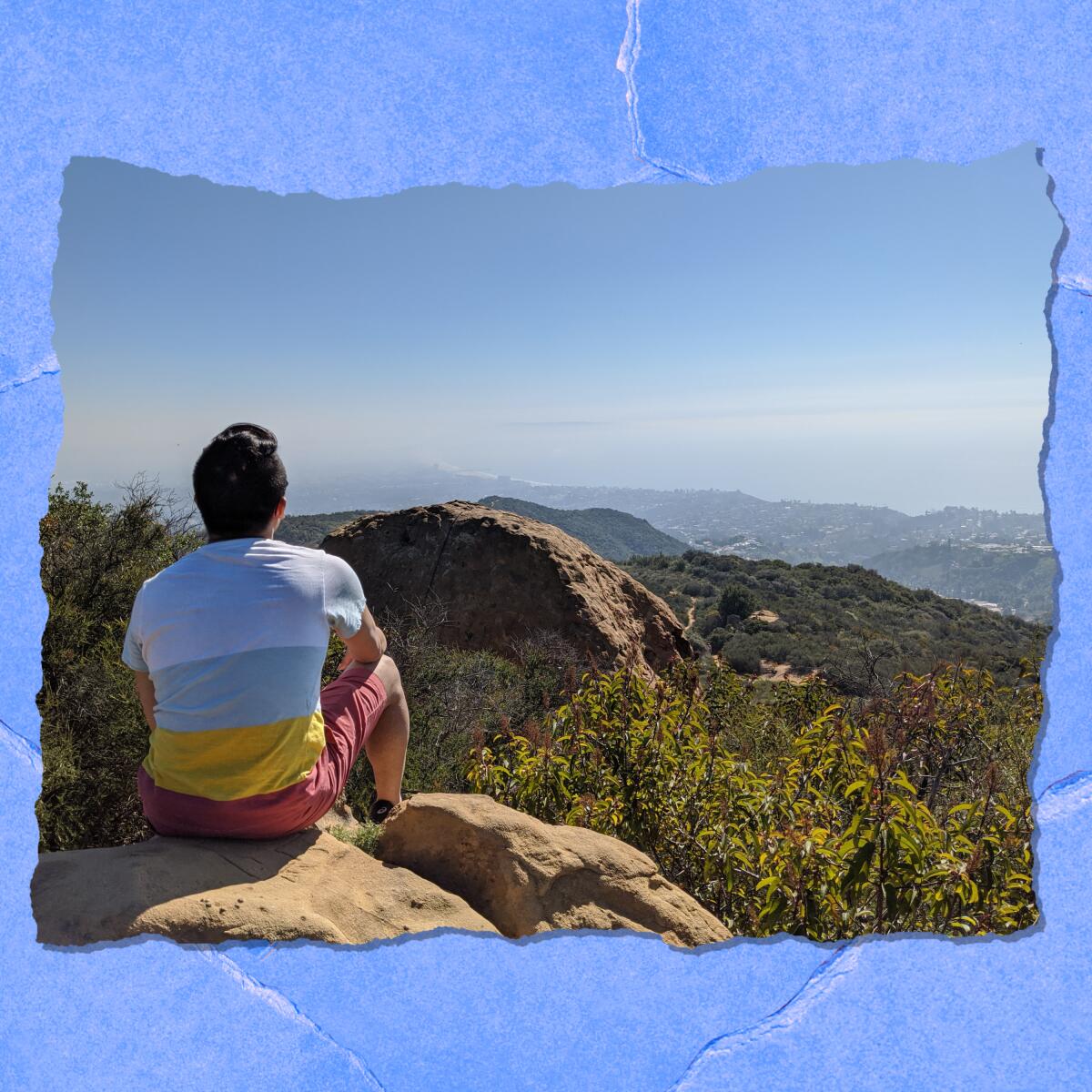
4. Climb to coastal views with Just Trek in Temescal Canyon. The 4.6-mile workout to Skull Rock in Pacific Palisades’ Temescal Gateway Park gains 1,100 feet and rewards with epic coastal panoramas. Just Trek’s founder, Justin “Justroc” Rimon, will be leading the event, which invites all to enjoy community with like-minded folks, improve your overall physical fitness and soak in the stellar vistas together. Plan to arrive at the trailhead on Saturday at 8:30 a.m. Tickets are $5.

5. Catch an outdoor performance at the Griffith Park Shakespeare Festival. The Independent Shakespeare Company is back with its classic Griffith Park plays Wednesday through Sunday at 7 p.m. This weekend marks the final performances of the rarely performed comedy “The Knight of the Burning Pestle,” written by a friend of Shakespeare’s. Next month marks the return of a Bard classic, “Macbeth,” which will feel even eerier at Griffith’s Old Zoo venue. Registration is free but limited, and seating is first-come, first-served. Looking for more Griffith Park entertainment? Check out the new “Signs of Life” planetarium show, which aims to “ uncover what it took to put life in the universe.”

6. Do a downward dog with your dog under the Hollywood Sign. Join PetSwapp and the Channel 1111 Foundation for a relaxing morning of guided yoga with your furry friend at the beautiful Lake Hollywood Park. Bringing Fido is optional, but there will be tons of canines to breathe and bark with at the session, which also has guided music and both doggy and human refreshments.
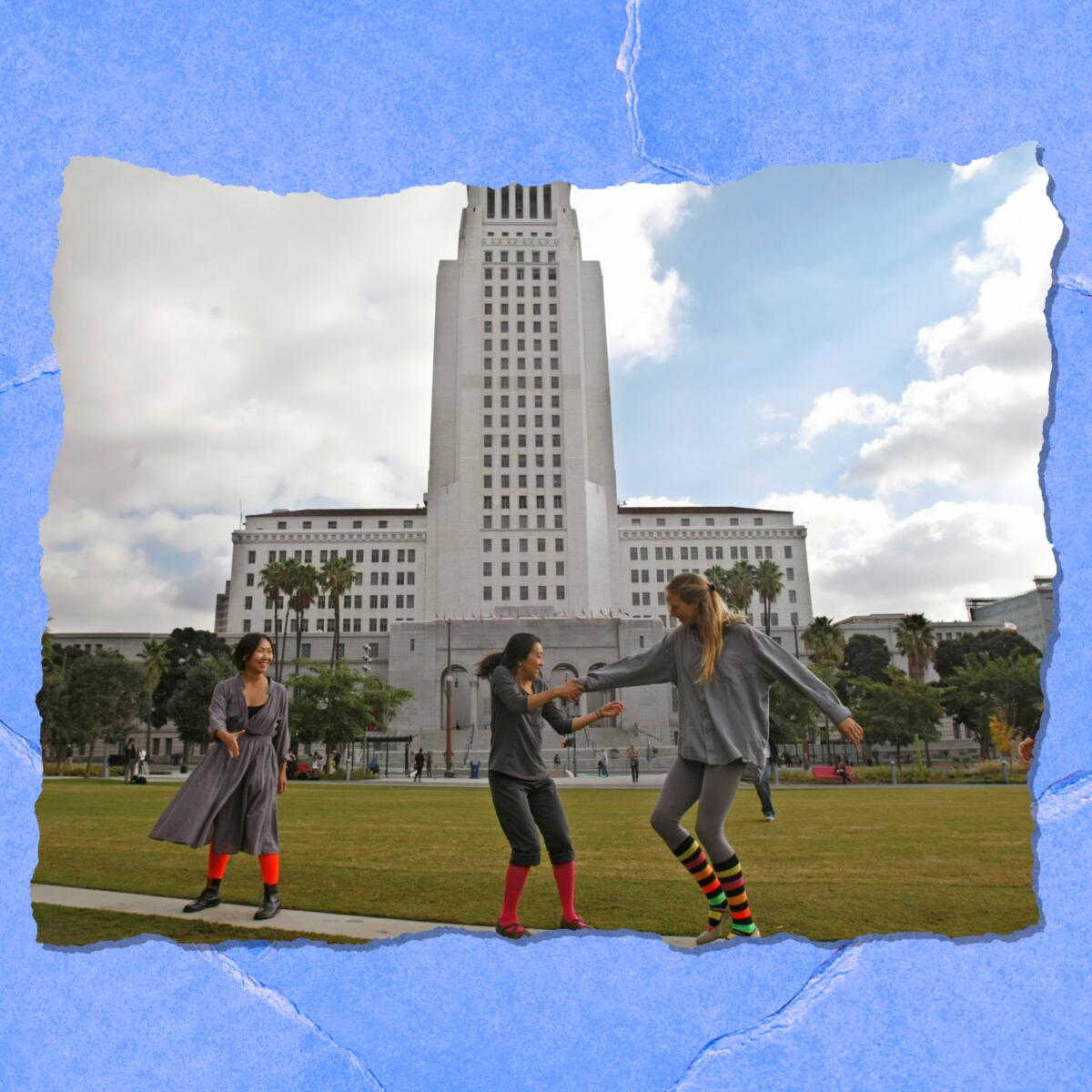
7. Attend a summer festival to celebrate our communities. It’s the season for outdoor entertainment and we are fortunate to live in a city that loves fun under the sun. Check out the KCRW Summer Nights series at downtown’s Grand Park for some seriously cool live music this Saturday from 6 to 10 p.m. (consider taking an urban art walk beforehand) or Redondo Beach’s Summer Concert Series on the Pier.
Our daily news podcast
If you’re a fan of this newsletter, you’ll love our daily podcast “The Times,” hosted every weekday by columnist Gustavo Arellano, along with reporters from across our newsroom. Go beyond the headlines. Download and listen on our App, subscribe on Apple Podcasts and follow on Spotify.
Hike of the week
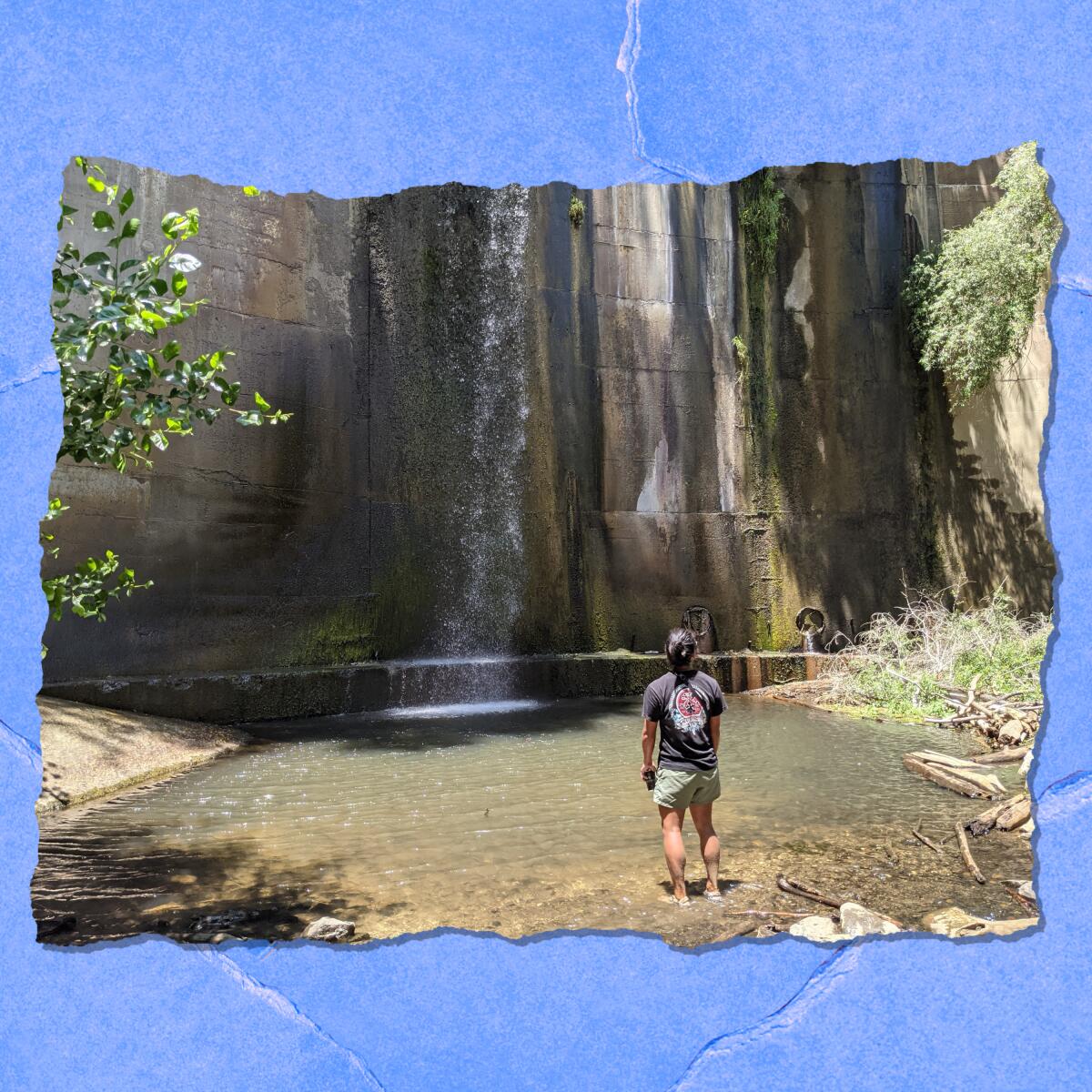
Gabrielino Trail to Brown Mountain Dam. If you’re looking for a summertime shade-friendly hike in the Angeles National Forest, you’re likely to stumble across the popular trek through Bear Canyon to Switzer Falls. And for good reason! But this weekend, share the shade with fewer folks via the highly accessible Gabrielino Trail to Brown Mountain Dam. Featured in The Times’ list of top 10 shaded hikes, it’s a 10-mile out-and-back adventure (roughly 900 feet of gain) from Hahamongna Watershed Natural Park (disc golf, anyone?) to the 1943 dam, which was the first project of the U.S. Forest Service Los Angeles River Watershed program. The relatively flat trail follows a quaint stream and meanders under the protection of oaks, pines, firs and walnut trees. The 81-foot falls still have water trickling down in the summer, perfect for a refreshing mid-hike cool-down and a picnic lunch. If you want a shorter (but arguably more challenging) workout, opt for a technical 2.25-mile trip that switchbacks into the canyon.
The red flag
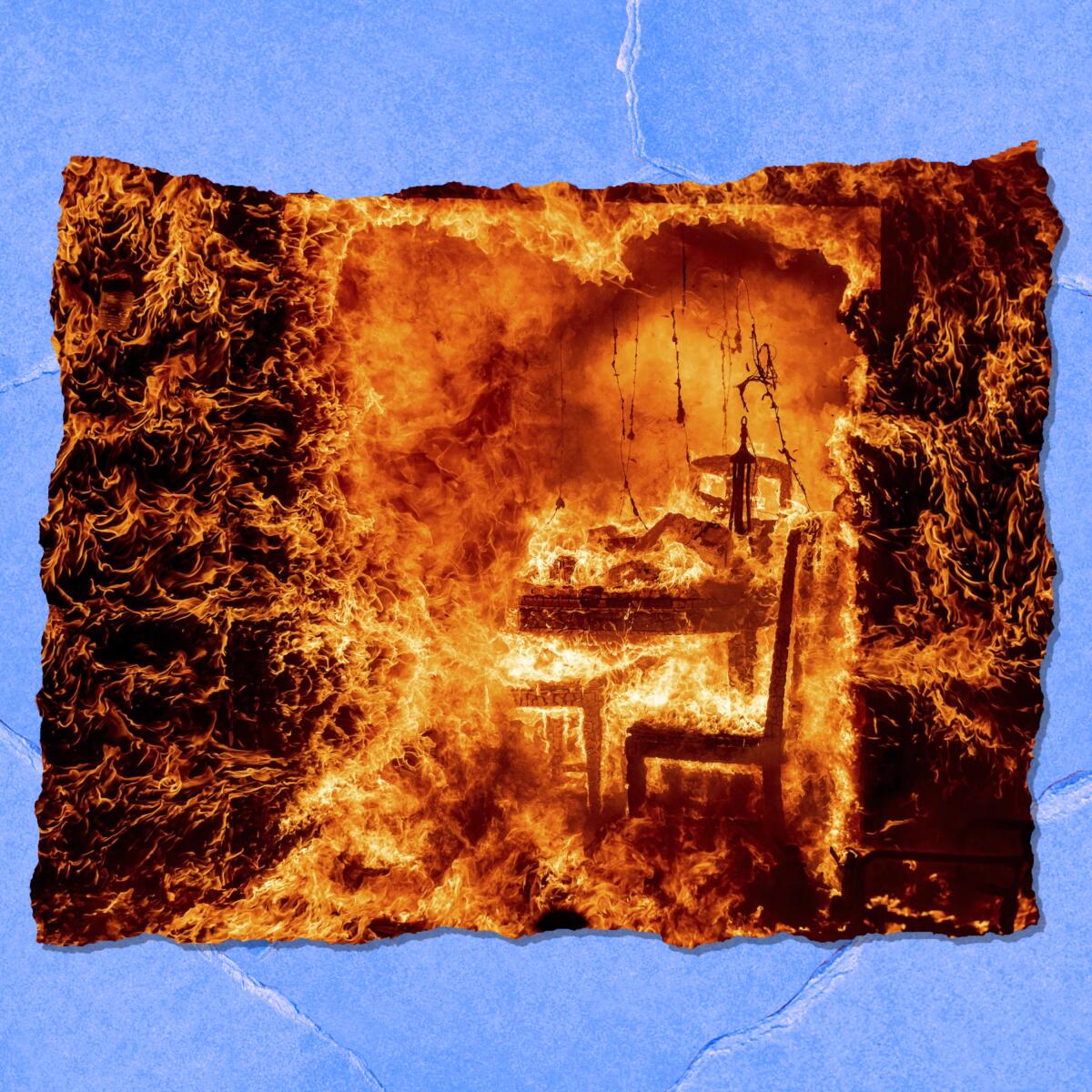
In case you haven’t noticed, it’s fire season. Last week, I marveled at the incredible efforts of firefighters to save Yosemite’s Mariposa Grove of sequoias from the Washburn fire. However, since then, California has already experienced its largest burn of the season; the Oak fire, which started Friday in the Sierra Nevada foothills west of Yosemite National Park, has forced thousands to evacuate. Now, California Gavin Newsom has officially declared a state of emergency for Mariposa County. With infernos like these and the huge current and future impacts of climate change, Times writer Alex Wigglesworth shares a grim reality: with fires as severe as these, some forests might vanish forever. Read Times reporter Madalyn Amato’s tips for wildfire preparation and keep an eye on our 2022 wildfire map.
Wild things
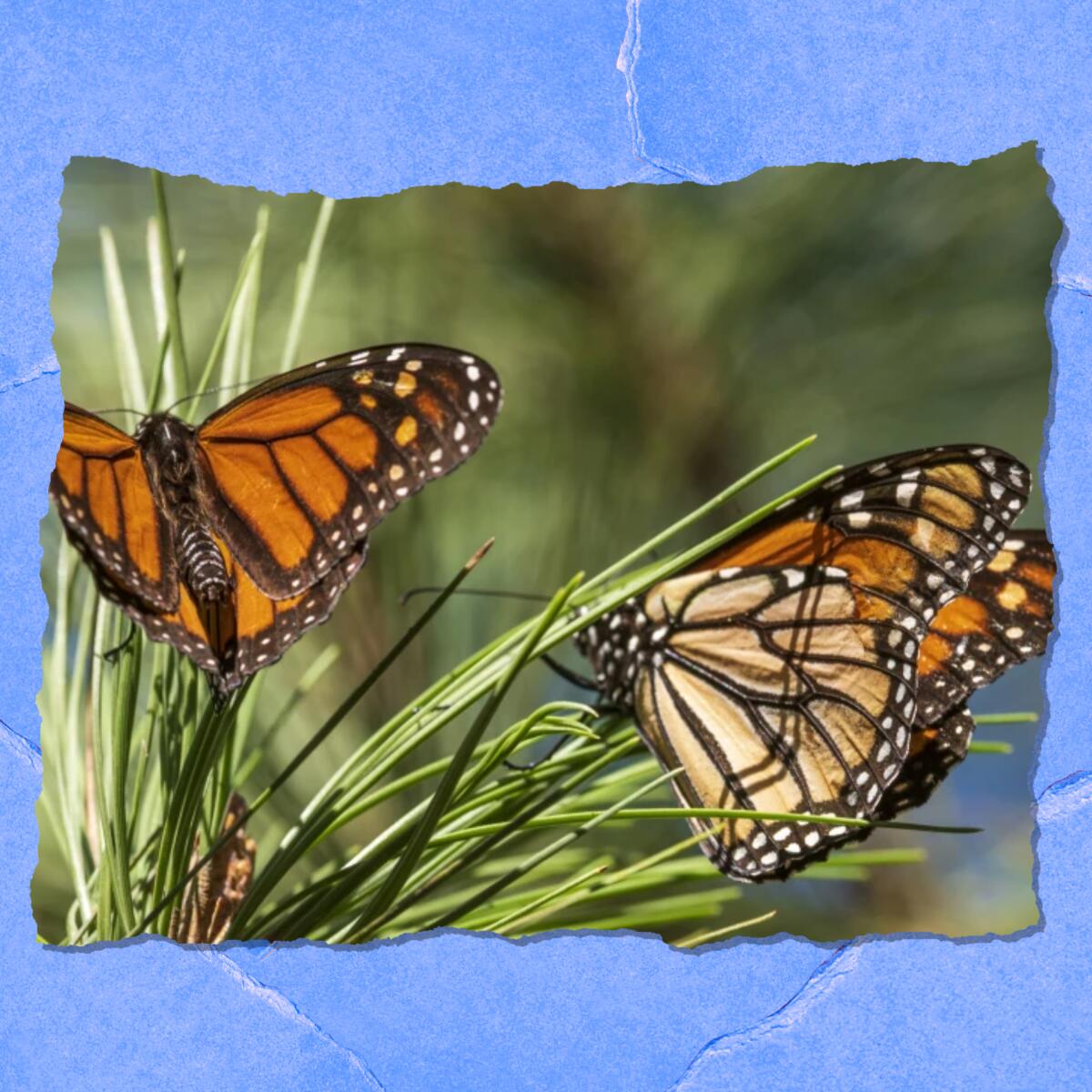
It’s official: Monarchs are endangered. Last week, the International Union for the Conservation of Nature moved the beloved butterflies to the “red list” with its newfound threatened species classification. The royal pollinators are known for their incredible North American migration from Mexico to Canada and back (upwards of 3,000 miles!), the longest of any insects. Despite recent optimism, the rate of decline has surged (experts estimate “between 22% and 72% over 10 years, depending on the measurement method”), prompting environmental groups to push for protection under the Endangered Species Act. And let’s hope this comes soon — after all, their famous metamorphosis is an iconic symbol for change.
What can we do to help? Last year, Times writer Jeanette Marantos documented six ways to help the magical migrator, the most important being planting native milkweed. We can also simply observe the winged wonders. Though not as abundant as during the fall-winter migratory period (October to February), butterfly-watchers can help gather data in ongoing conservation efforts this summer with the International Monarch Monitoring Blitz happening July 29 through Aug. 7.
Cool stuff

The best way to hike the Appalachian Trail this summer is in your backyard. With the most famous hiking route in America becoming increasingly crowded, why not delay the bucket list adventure and walk the nearly 2,200 miles on your own terms, time and terrain? With the Walk the Distance app, hikers can track their miles as they virtually hike the AT, progressing along a map (you can also do the PCT!). Make it to Georgia’s Blood Mountain, the highest point on the journey, after a morning neighborhood stroll, or summit Mt. Katahdin, the trail’s north terminus, after bagging a peak in our resident San Gabriels. Doing the real thing can be a truly life-changing experience (as Times writer Ben Poston noted in his beautiful, inspiring account), but sometimes we all need a little motivation to discover and appreciate our local trails and work toward those fitness goals we set last year.
P.S.

Times writer Melissa Hernandez recently reported that a mountain lion was struck and killed along the 101 Freeway, the second big cat to suffer a traffic tragedy in the Santa Monica Mountains in the last month. The recently deceased young cougar, P-89, was a 2-year-old male and one of many who regularly attempt to cross the busy freeway. In an effort to provide cougars and other animals safe passage, the Wallis Annenberg Wildlife Crossing broke ground in April. The bridge is expected to be completed in 2025, but there’s more we can do. In fact, California senators will consider AB-2344 next month; the Safe Roads and Wildlife Protection Act would require “Caltrans to identify potential wildlife barriers on all future transportation projects and implement at least 10 projects that improve wildlife crossings.” This would be a huge victory — after all, as The Times Editorial Board noted: “Mountain lions may top the food chain in the wild, but on a road, the car is the apex predator.” To join the fight for protection, consider educating yourself with resources from the National Park Service (and a visit to the Santa Monica Mountains National Recreation Area) or volunteering with local groups like Save L.A. Cougars and the Cougar Conservancy.
Sign up for The Wild
We’ll help you find the best places to hike, bike and run, as well as the perfect silent spots for meditation and yoga.
You may occasionally receive promotional content from the Los Angeles Times.




